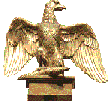
Napoleon's Grand Armee was the world's greatest conquering machine. It never gave up. Here are some different facts about the soldiers of the Napoleonic Wars.
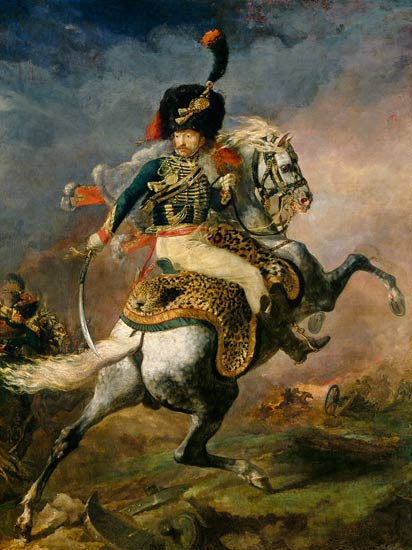 An Officer of the Chasseur's a Cheval de la Garde 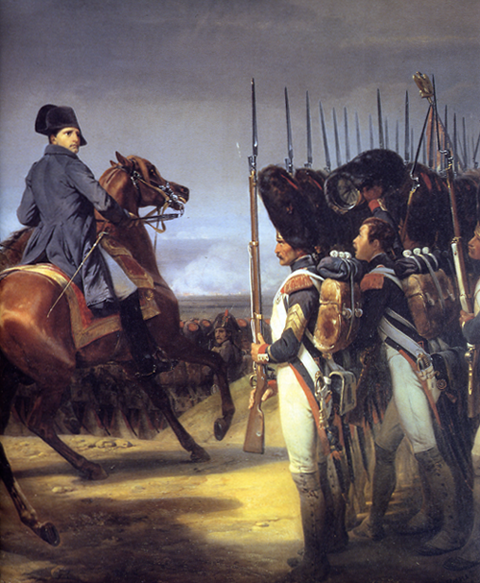 Napoleon at Jena when a member of the Imperial Guard yells out advice to Napoleon. Napoleon replies "Only a beardless youth should presume to judge in advance in what I would do. May he command in over 30 pitched battles before he dares to give me advice." | Napoleon's Imperial Guard
The bond with the Emperor was strengthened by his personal approval of the design of each detail that went into their uniforms. He also saw to it that the Guard was better paid, equipped and looked after than any other force within his armies. During the period 1806 to 1808 the Guard formed two regiments each of grenadiers and chasseurs, with the service requirements for the second regiments being lowered to eight years. The artillery also received a boost in 1806 with a regiment (six companies) of horse artillery as well as a battalion of train troops and was greatly expanded in 1808. The horse artillery was reduced to 32 guns, but three companies of foot artillery and three companies of conscript cannon were formed. The conscript formations later became the Young Guard artillery. There is much confusion over what constituted the Old, Middle and Young Guard units - basically it depended upon time of service. The Old Guard: This was made up of officers of the Grenadiers, Chasseurs, Fusiliers and Seamen as well as colonels, majors and capitains of the Voltiogeurs, Flanqueurs, Tirailleurs and National Guards. All troops within the 1st Grenadiers, 1st Chasseurs, Veterans and Seaman, as well as sergeants of the 2nd Grenadiers, Chassuers and Fusiliers. The Middle Guard: All troops of the 3rd Grenadiers, the corporals and troops of the 2nd Grenadiers, Chasseurs and Fusiliers. The Young Guard: Voltigeurs, Tirailleurs, Flanquers and National Guards. | ||||||||||||||||||
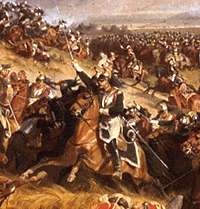
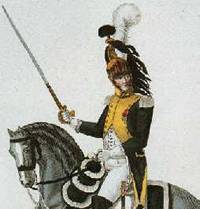

 |
Napoleonic Cavalry
|
French Infantry
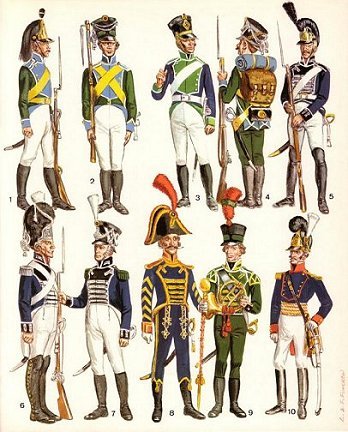 Uniforms of the Napoleonic French Infantry 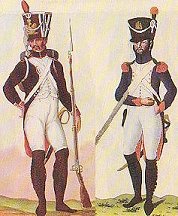 | Line Infantry The bulk of the French army, which in 1803 numbered some 350,000 men, was made up of line regiments. Light Infantry Light infantry officially became part of the army in 1801, when voltigeur (leaper) companies were added to the line-ups of French line regiments.
Left: A French fusilier on the left and a French grenadier on the right. |
French Artillery
 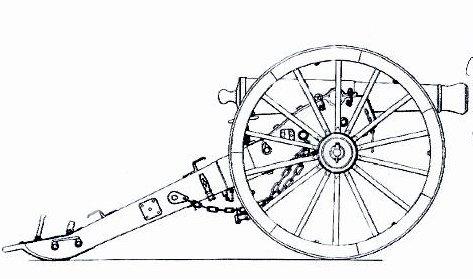 | As one would expect with the Emperor, Napoleon Bonaparte, being a former artillery officer, France's cannons made up the backbone of the ground forces. The French guns were generally used in massed batteries to soften up enemy formations before being subjected to the closer attention of the infantry or cavalry. Superb gun-crew training allowed Bonaparte to move the weapons at great speed to either bolster a weakening defensive position, or else hammer a potential break in enemy lines. In general, French guns were 4-pounders, 8-pounders or 12-pounders, with the lighter calibres being phased out and replaced by 6-pounders later in the wars. French cannons had brass barrels and their carriages, wheels and limbers were painted olive-green. |